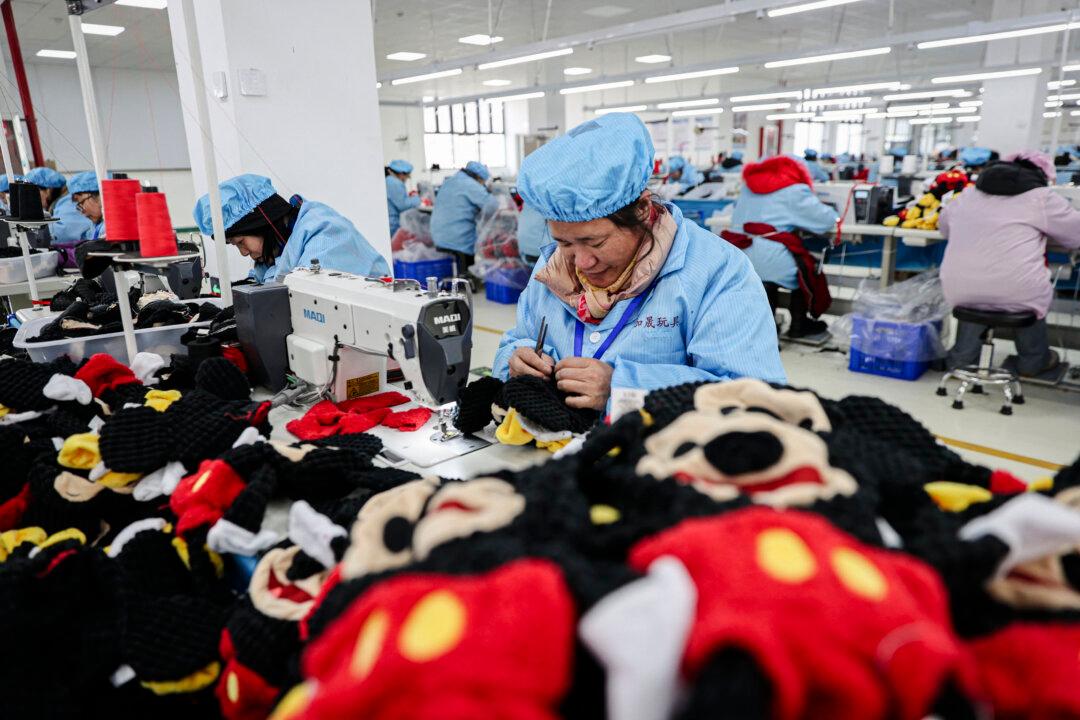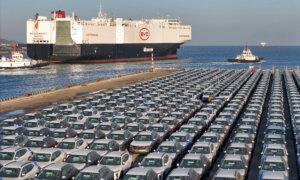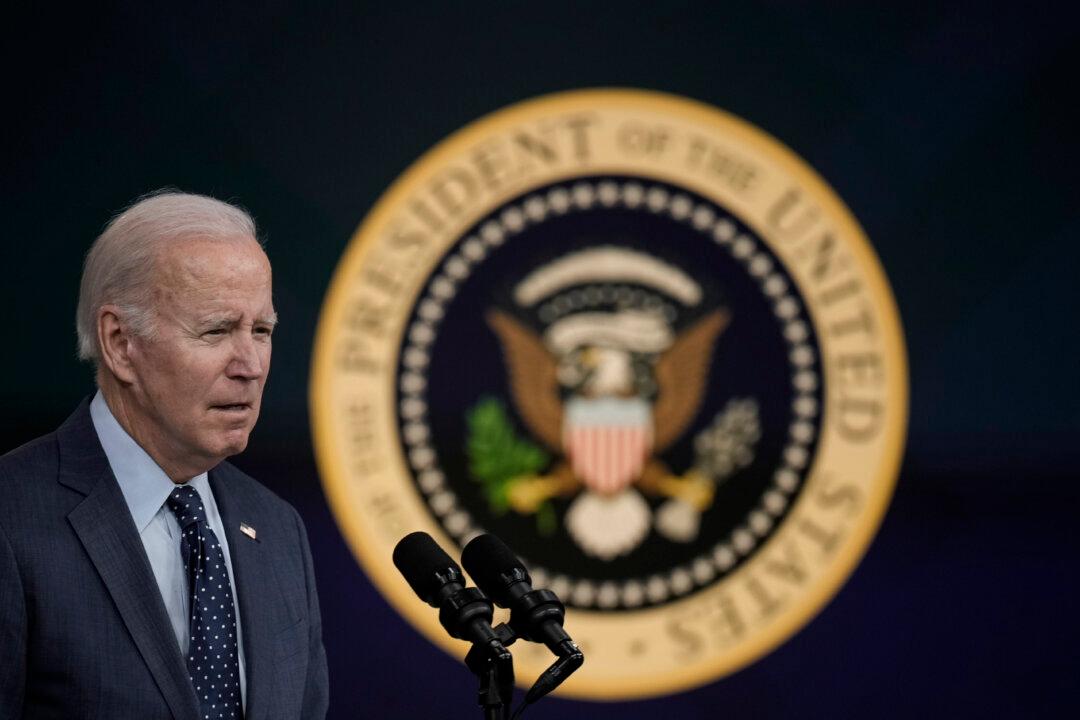The Chinese growth miracle has become a mirage.
Commentary
The Chinese communists have been leading a charm offensive to encourage foreign direct investment (FDI) in the ailing Chinese economy.
Will all that confound the foreign number crunchers who are increasingly concerned about Chinese economic statistics?
The latest soothing psychological warfare aimed at foreign investors was conveyed during the warm reception of U.S. Treasury Secretary Janet Yellen in Beijing, where she met with Chinese Premier Li Quang and other officials on April 7. State-run Chinese media echoed Li’s emphasis on “stabilizing relations with the U.S.,” “not politicizing economic and trade issues,” and Xi’s strategic messaging of “mutual respect, peaceful coexistence and win-win cooperation.”
The Chinese Communist Party’s (CCP’s) immediate goal is a return to “normalcy with Chinese characteristics,” such as an end to the
U.S.–China decoupling and derisking and a restoration of foreign confidence in the Chinese economic growth model on CCP terms, in which all benefits accrue to China without sacrificing communist leadership, dignity, or prestige.
However, there are continuing signs leaking out of communist China of serious problems in its economy that undermine the rosy picture painted by the CCP and its lapdog media.
Let us examine the topic.
FDI Is King
FDI is defined by
Investopedia as “a substantial, lasting investment made by a company or government into a foreign concern.” The stagnant Chinese economy inherited from Mao Zedong was jump-started by FDI initiated under CCP leader Deng Xiaoping in the 1970s.
The mirage that is the “Chinese economic miracle” was subsequently built on the backs of cheap Chinese labor, a real estate bubble, and massive foreign investments, including capital, management and technical know-how, technology, and equipment. Toss in mercantilist trade practices that include Chinese
over-capacity/production and
large government subsidies to lower the retail costs of Chinese goods.
The communists understand fully that FDI is the most important pillar of their economy and that convincing foreigners that “all is well” is key to restoring confidence in continued investments in China; hence, the seemingly endless claptrap and sloganeering about win-win cooperation, mutual respect, and stabilized relations.
Recent Signs of Distress in China’s Economy
Official Chinese economic statistics are problematic. On March 6,
The Wall Street Journal quoted a multi-year analysis of China’s GDP by the
Rhodium Group, which advertises itself as “an independent research provider that combines economic data and policy insight to analyze global trends.” Rhodium concluded that China’s National Bureau of Statistics (NBS) has “vastly overstated recent growth.” Rather than the NBS-claimed 3 percent GDP growth in 2022, Rhodium believes GDP actually shrank that year, while the 5.2 percent growth projected by NBS in 2023 was actually only 1.5 percent.
With this track record, can rosy 5 percent GDP growth projections for 2024 be believed?
Many more signs of problems have been reported in recent weeks.
The Shanghai-based
Chinese financial news site East Money reported on April 1 that the Chinese lithium battery industry is plagued by “overcapacity and price wars,” which has led many suppliers to implement “suspensions of production, layoffs, and salary cuts.” With the global demand for electric vehicles slowing in recent years, top Chinese battery manufacturer
Contemporary Amperex Technology Co., Limited (CATL) has seen its manufacturing capacity utilization rate slump from 95 percent in 2021 to 70.47 percent in 2023, which is still “much higher than the industry average capacity utilization rate [of] 41.8 percent.”
According to
Reuters, Chinese manufacturing activity continued below the manufacturing purchasing managers’ index (PMI) of 50 for the fifth consecutive month in February, with a PMI below 50 signifying contraction, not growth. A key quote: “China’s disappointing post-COVID recovery has cast doubts about the foundations of its economic model.”
In more signs that foreigners are questioning Chinese economic data,
Reuters reported on March 14 that the U.S. Department of Agriculture has switched from using customs data supplied by China’s General Administration of Customs for estimating Chinese soybean imports to more reliable global exporters’ data “because a wide gap emerged between shipping figures from producing nations and Chinese customs data.” Some experts believe the Chinese were under-reporting soybean imports to bolster Xi’s food security campaign in preparation for projected future economic woes.
On March 22,
Taiwan’s Central News Agency quoted statistics from China’s Ministry of Finance that further indicated economic troubles on the mainland. The data showed that “Chinese tax revenue during the first two months of 2024 saw a year-over-year decrease of four percent, and personal income tax revenue suffered a significant reduction of 15.9 percent.” These are indications of recession and contraction, not rosy 5 percent growth!
The independent website
China Truths reported on March 5 about problems in China’s banking industry reflected by new withdrawal limits that were covertly implemented by a number of banks, as well as “five nos” given to the Chinese financial sector. For example, under the direction of the People’s Bank of China, the Chinese Construction Bank abruptly “introduced a model to evaluate transaction histories and set caps accordingly.”
Substantial personal financial and employment information is required to increase daily withdrawal limits to a top end of 5,000 yuan (about $690). There is speculation that daily withdrawal and transfer caps were implemented to relieve stress on the Chinese banking system as banks are forced to cover ongoing local government losses associated with bad real estate investments.
The independent website
China Observer reported in late February that Japanese beverage manufacturer Yakult laid off 800 people at its subsidiary in Shanghai. This was reportedly Yakult’s first large-scale layoff in China. The report also discussed ongoing layoffs and wage cuts at “factories in Shenzhen, Guangzhou, Huizhou, Dongguan, Zhongshan, and Foshan.” This is one result of decreasing overseas demand and declining FDI, as well as the fallout from Xi’s zero-COVID policy that rocked China’s economy for the three years ending in December 2022.
Lastly, in what must be a shock to the CCP after years of wooing and dangling incentives to expand chip production facilities in China, Taiwan Semiconductor Manufacturing Company (TSMC) has chosen to expand production in
Japan and
Arizona instead. The ebb of
foreign investment out of China is becoming a flood.
Concluding Thoughts
The bad economic signals that continue to slip out of China, coupled with the “statistical irregularities” in reports from official Chinese agencies such as the National Bureau of Statistics and the General Administration of Customs, are finally catching up to the communists.
Reuters reported on April 10 that
Fitch Ratings, an international credit rating agency, “cut its outlook on China’s sovereign credit rating to negative ... citing risks to public finances as the economy faces
increasing uncertainty in its shift to new growth models [emphasis added].” The shift is attributed to public finance problems affected by “the double whammy of decelerating growth and more debt.”
Apparently, the unmeasurable new Chinese qualitative development model touted by the CCP, which incorporates environmental sustainability and social inclusion, isn’t fooling international credit ratings agencies.
The trend is not a good one for China, as Reuters pointed out that “China’s overall debt-to-GDP ratio climbed to a new record of 287.8% in 2023, 13.5 percentage points higher than a year earlier, according to a report by the National Institution for Finance and Development (FIND) in January.”
Decreasing tax revenues, a looming bank crisis, feeble purchasing managers’ index numbers, and increasing public debt are not symptoms of a growth economy. Quite the contrary!
Does anyone still believe that communist China will achieve the 5 percent GDP growth predicted by the CCP’s National Bureau of Statistics for 2024?
Views expressed in this article are opinions of the author and do not necessarily reflect the views of The Epoch Times.







